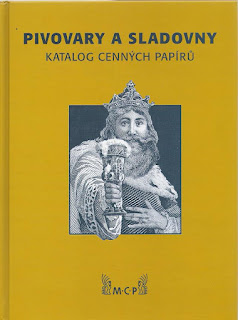If I would summarize 2012 for scripophily, then these four words come up in my mind :
- Asia
- speculation
- exhibitions
- USA
Asia
Interest in antique securities related to Asia continues to grow. True, there is a lot of speculative demand in Chinese foreign bonds, but also the demand in "true" scripophily material from China is strong. An evolution seen in antiques in general, as you can read here. Other regions are becoming more popular as well : Indochina, Hong Kong, Philippines, Japan and, in my opinion to a lesser degree, also India, Malaysia and Indonesia. At least two major auctioneers of stocks and bonds are now organizing auctions in Hong Kong offering Asian scripophily.
In 2012 speculation in uncancelled antique securities was omnipresent at auctions and online platforms like eBay. I believe there was not one copy of Scripophily magazine, or der aktiensammler, that was not addressing this topic. Such speculation is not a new thing, but existed even before people introduced the term scripophily. A more recent example was the speculation in the 1872 bonds of the Compañia Nacional del Ferrocarril Mineral de Pasco. Before, these bonds were available at 30 to 100 Euro as collectibles. In 2010 and 2011 speculators started paying up to 1000 Euro in auctions. This year, the price for a 'Pasco' fell to about 200 Euro, a price just acceptable for these beautiful and uncommon certificates. We see a similar story this year with the much more common shares of the Banco Central Mexicano. For dealers and collectors it is possible to benefit from these speculation waves, often by pure chance. The phenomenon brings stirring in the hobby. It is an interesting topic to debate on, but it's nothing more than a result of rumors in a very thin market. Don't let it carry you away.
Exhibitions
This year I have counted at least seven exhibitions featuring scripophily. Some of these exhibitions lasted a whole year, others only 1 day. Such events introduce our hobby to the general public and are great opportunities to see uncommon material. I can only say, more of this please.
On a regular basis, I see rare and historically interesting American certificates fetching good prices on eBay ($100-$500). These sales are often driven by ten or more bidders. Common stocks and bonds will always stay common, but with regard to those special items, I see an interesting evolution on eBay USA. Is it just me who feels this way ?
Blog statistics of 2012
As usual I round up the year with the statistics of this blog. I used Google Analytics, a web tool for analyzing the web traffic on a site, to review the period 1 Jan 2012 - 20 Dec 2012. Between brackets you'll see the corresponding numbers for 2011, see also here.
This year, the threshold of 50,000 page views was exceeded.
In the considered period 9779 absolute unique visitors were visiting this blog (2011: 4792, + 104% ). The chart below indicates roughly a more or less stable range between 140 and 270 unique visitors per week (2011: between 60 and 220 per week), a level that was already reached at the end of last year.
 |
| double-click image to enlarge |
The number of returning visitors to this blog make out 24%. This comes down to about 2300 returning visitors in 2012 (about 1400 in 2011). This doesn't mean all of the visitors are collectors.
What about the geographical distribution ?
In absolute figures, all sub continent regions show significant increases. However, the relative parts are shifting more pronounced. Just as previous year, more than half of the visits come from Northern America and Western Europe, but also similar as last year, we see a further relative decline : both regions aggregate to about 53% (-10%) of this blog's visits in 2012.
The regions with increasing parts are to be found in Asia. The number 3 is still South-Eastern Asia, and number 4 of 2011, Northern Europe, is now overtaken by Southern Asia. Western Asia, number 8, is now skipping South America. Together, these three Asian regions make up more than 21% of the total (+7%).
The only region in Europe that increases its part is Eastern Europe which includes Russia.
 |
| Locations visiting this blog in the period 1 Jan 2012 - 20 Dec 2012 |
Thank you for the many visits, and I hope to see you back in 2013.
Merry Christmas and best wishes for the New Year !
F.L.
The detailed sceneries shown above are 600 dpi scans taken from the vignette of the share below. With the naked eye, you can barely distinguish the smaller twigs of the trees. Notice also how the usage of subtle color differences, dark and light, give you an impression of depth. More on this topic, see here.
A wonderful piece printed by Waterlow & Sons. I found this particular certificate, which is one of the most known certificates in scripophily, in Paris at one of the "bouquinistes" along the banks of the Seine river, about 20 years ago.
A wonderful piece printed by Waterlow & Sons. I found this particular certificate, which is one of the most known certificates in scripophily, in Paris at one of the "bouquinistes" along the banks of the Seine river, about 20 years ago.
 |
| 1 Preferred share of 100 Dollars, 1912 Brazil Railway Company Printed by Waterlow & Sons, London double-click image to enlarge |
























,+F%C3%A4lschung+(unten),+(c)+HVB+Stiftung+Geldscheinsammlung,+M%C3%BCnchen.jpg)










